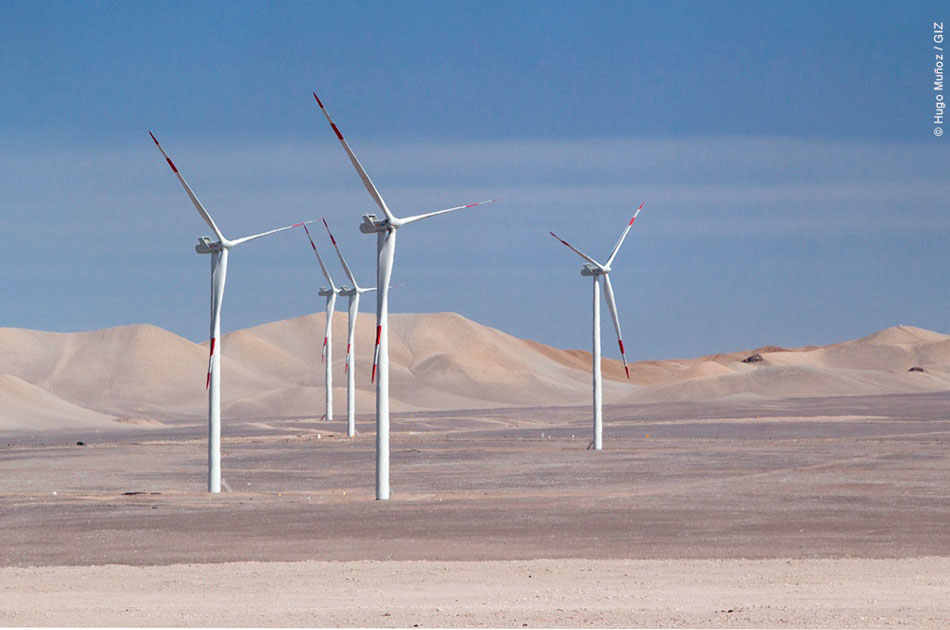- Wind technology uses air currents to generate electricity.
- Wind farms consist of several wind turbines. Each unit produces electricity by transforming the wind’s kinetic energy into mechanical energy, which is what causes the blades to rotate. This movement, in turn, drives a generator that produces electricity. The advantage of a wind turbine is that it produces clean energy, if there’s wind, during the day and night without taking up much space.
Wind Farm
- Patagonia, Chile’s southernmost region has a harsh climate. Strong, gusty winds blow almost year-round, offering ideal conditions for wind production.
- Thanks to constant winds and high average speeds, which sometimes exceed 10m/s on land, at times, reaching very high capacity factors, roughly 60%. By comparison, European wind farms reach capacity factors of between 22% (onshore) and 36% (offshore).
- Several wind corridors in the north and south-central parts of Chile, also make power generation with wind farms economically viable.
- Ten years ago, power generation with wind farms represented around 1% of the total energy matrix, corresponding to about 180 MW or 520 GWh. Today, the wind power plant share is approx. 2,100 MW, equal to 8.4 % of the total installed capacity, which enabled the generation of approximately 3,700 GWh (6.2 %) in 2019.
